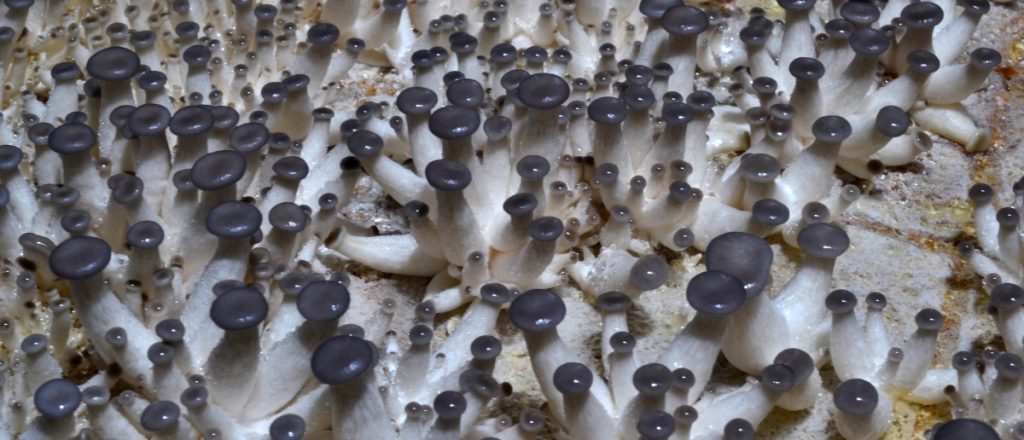People often think that growing mushrooms requires special equipment and laboratory conditions, and mushroom growing terminology can also be intimidating.
But don’t be intimidated. Growing your own gourmet mushrooms is easy and rewarding, and you don’t need expensive equipment.
Beginners can get started with nothing more than a mushroom growing kit, thermometer and spray bottle.
When you open your mushroom growing kit and start misting the substrate, the first thing that happens is mushroom pinning.
Here’s one of those mushroom growing terms we mentioned earlier, and you may be wondering what mushroom pinning means?
Read on to learn what mushroom pinning is, what it looks like, how and when to initiate mushroom pinning and how it fits into the mushroom growing process.
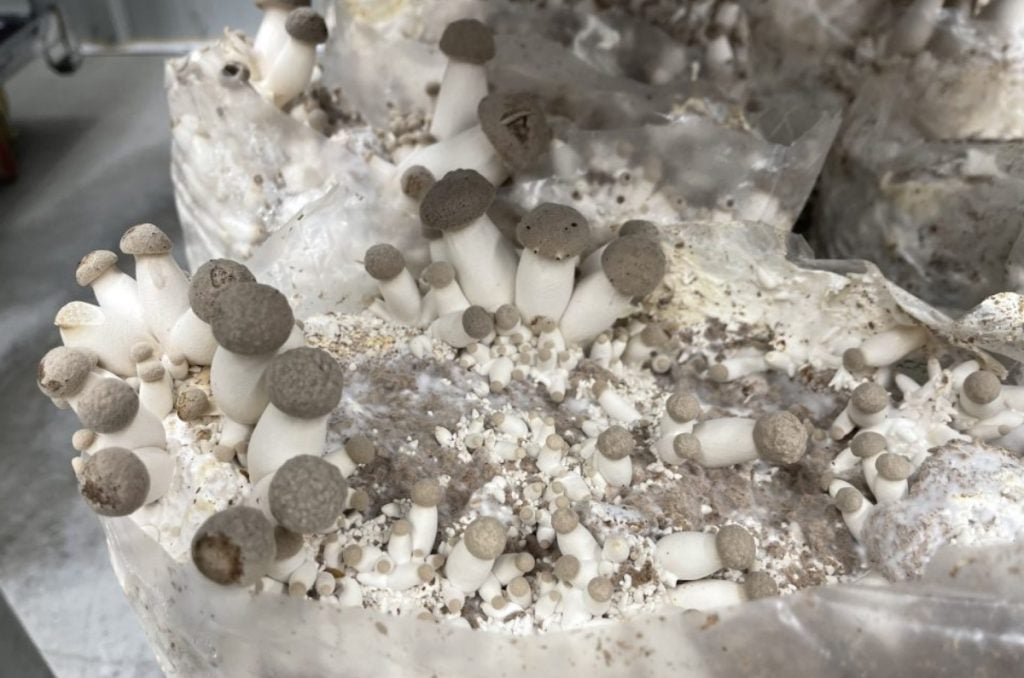
What is Mushroom Pinning?
Mushroom pinning is the process that takes place in the first stages of mushroom formation.
When a fungus has enough nutrients, specific environmental conditions will trigger the production of fruiting bodies that we know as mushrooms.
When this happens, the fungal mycelium shifts its focus away from growing in search of more nutrients and focuses on creating spore-producing fruiting bodies.
This process has many names, including pinning, pinhead initiation, knotting, pin setting or fructification.
It begins with strands of mycelium composed of hyphae, the hair-like cells that make up mycelium, bunching together to form hyphal knots.
These hyphal knots then develop into primordia or baby mushrooms that growers commonly call mushroom pins because they often look like pinheads.
Hyphal knots are the first point in a mushroom’s development visible to the naked eye. But, before this, a large portion of the mushroom’s life cycle needs to happen.
Our articles on the mushroom’s life cycle and how mushrooms reproduce have more information to help you understand the mushroom’s entire life cycle.
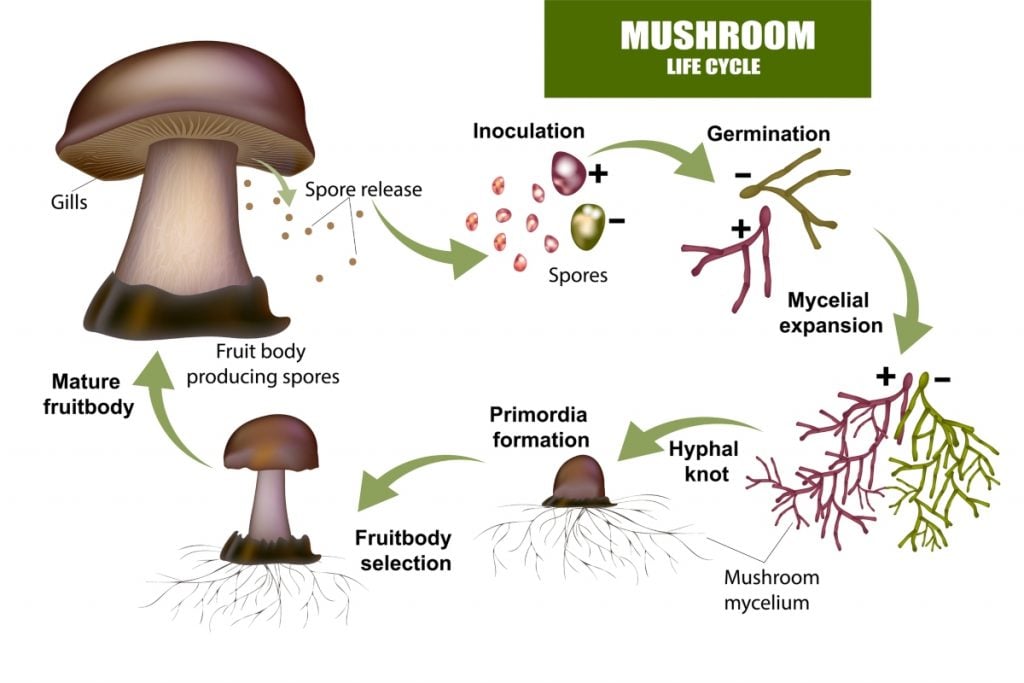
What Does Mushroom Pinning Look Like?
The first stage of mushroom pinning looks like tiny little bumps starting to form on the surface of the mycelium covering your mushroom substrate.
The mycelium clumping together to form hyphal knots causes these bumps.
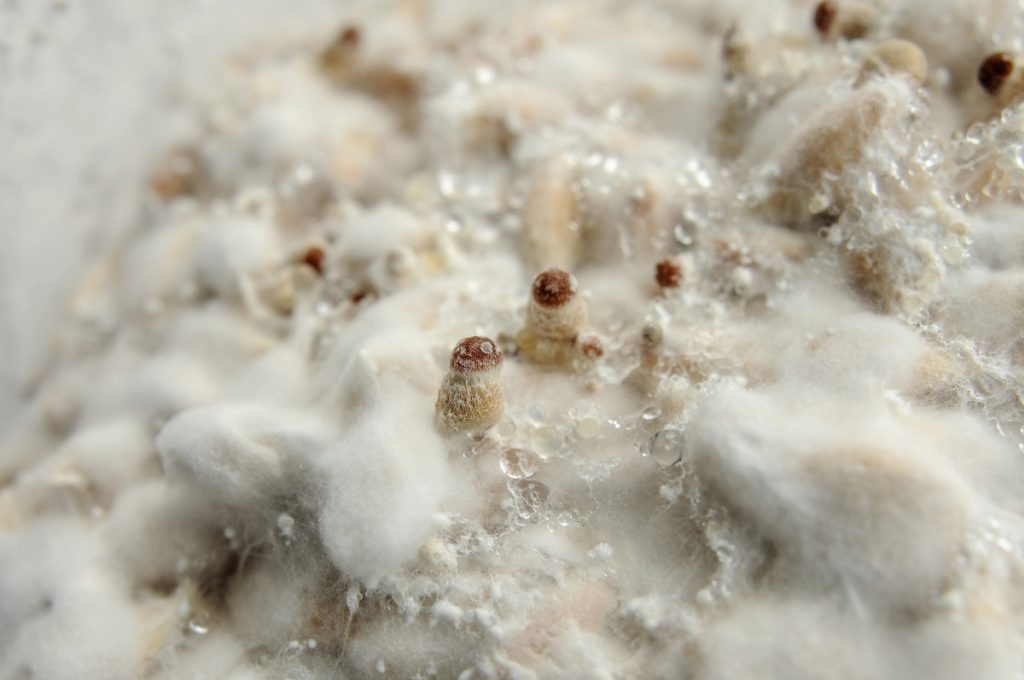
How Do I Know Mycelium is Pinning?
If your mycelium has completely colonized the substrate, begins to get denser, and forms white blobs or bumps, you know the pinning process is beginning.
These bumps or hyphal knots continue to grow from the surface of the substrate and develop into tiny matchstick-like primordia or mushroom pins.
During pinning, mushrooms use cell division to form all the cells they need to produce the final mature mushroom.
Once pinning is complete, they no longer use cell division to grow. Instead, they flood the existing cells with water and nutrients, allowing them to expand rapidly.
Not all the mushroom pins will grow into mature mushrooms. The fungus selects the healthiest, most viable pins, and these expand to become mature mushrooms.
This growth method differs substantially from plants and animals and allows mushrooms to grow a lot faster.
In the oyster mushroom time-lapse video below, we explain this process, and you can see how fast oyster mushrooms grow in just seven days.
How to Initiate Mushroom Pinning
In the right conditions, some mushrooms, including many oyster mushroom strains, will start pinning as soon as they have colonized the substrate.
But, other types of mushrooms may need more specific conditions to start pinning, such as:
- Lower temperatures, often around 53 to 64°F (12 to 18°C)
- High humidity, generally RH levels of 85% or higher
- Fresh air exchange and CO2 levels less than 1000ppm}
- Some indirect light
Your aim when initiating pinning is twofold. Firstly, to let the mycelium know it has reached the surface by providing light and reducing CO2 levels.
And secondly, to simulate autumn-like conditions to signal to the mycelium that it’s a suitable environment for fruiting. Lower temperatures and high humidity help with this.
Depending on the type of mushrooms you are growing and the method you’re using, initiating pinning could involve different things.
If you’re growing mushrooms in bags, it could involve cutting a hole, opening the top of the bag or, for shiitakes, removing the grow bag completely and misting the colonized substrate.
When growing mushrooms in buckets or containers, you’ll want to uncover the holes or remove the lid and mist the colonized substrate.
No matter which method you’re using, you not only need to provide fresh air and humidity, you also need to place your mushrooms in a location with the correct temperatures and lighting.
A spot on a kitchen counter near a window may do for easy-to-grow mushroom species like oyster and shiitake mushrooms.
But for fussier species or growing mushrooms year-round, a mushroom fruiting chamber is the best way to ensure optimal pinning and growing conditions.
Monotubs, shotgun fruiting chambers and Martha grow tents are all inexpensive DIY options for beginner mushroom growers.
And, if you want to start a mushroom farm, a walk-in mushroom grow tent or grow room with space for shelving or hanging bags is a must.
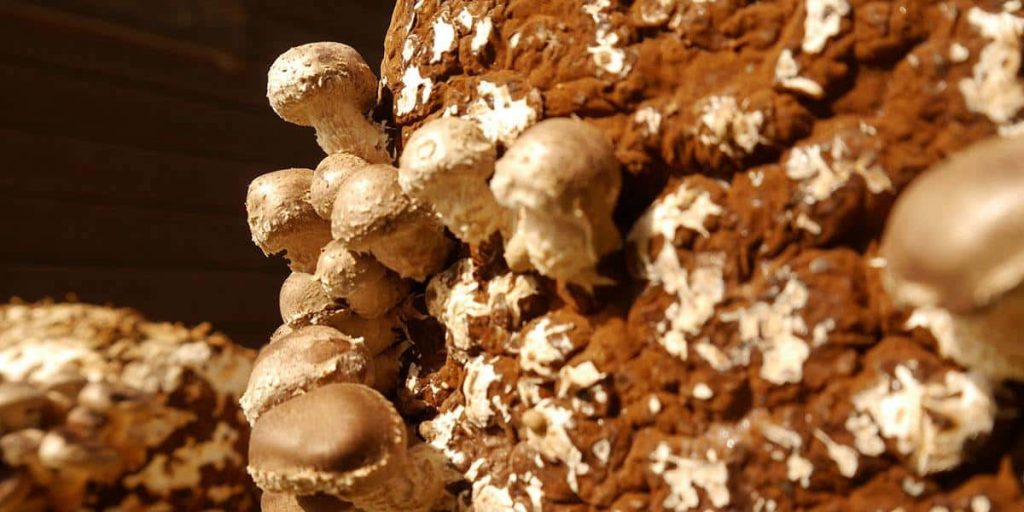
When to Initiate Pinning?
Visual confirmation is the best way to tell when your substrate is ready for fruiting conditions.
There is no set time frame for incubation, and several factors, including temperature variations and spawn rate, can influence how long it takes the mycelium to colonize your substrate.
Be patient and wait until you see hyphal knots and primordia forming on the substrate before providing fresh air and autumn-like conditions.
If you initiate pinning when you think the substrate should be ready without visual confirmation, one of two things could happen.
The mycelium may continue to colonize the substrate and not form pins until it is ready.
You’ll wait longer for pinning and increase the chances of contamination or the substrate drying out. It’s also more work for you as the substrate needs regular misting.
Or, the mycelium will start pinning without fully colonizing the substrate. Once again, the chances of contamination increase as it’s easier for mold to form on uncolonized bits of the substrate.
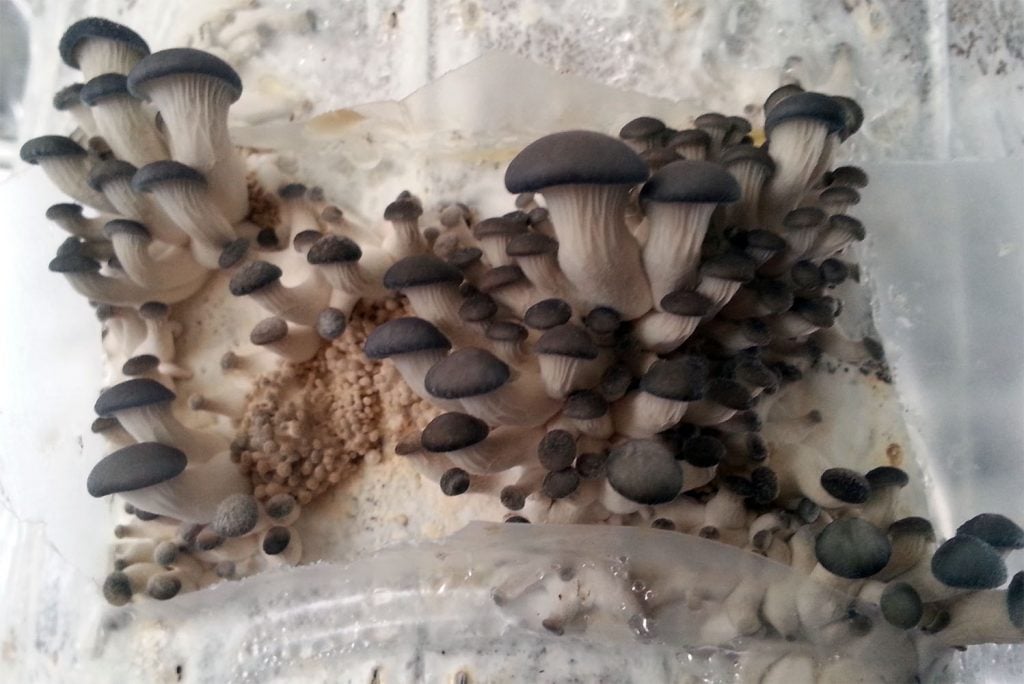
How Mushroom Pinning Fits Into The Mushroom Growing Process
Mushroom pinning comes after the incubation stage when the mushroom mycelium has completely colonized the substrate.
For those new to mushroom growing, our ultimate guide on how to grow mushrooms has more information on the various stages in the mushroom growing process.
The mushroom pinning stage impacts final mushroom yields, and mushroom growers work hard to simulate the mushroom’s ideal natural conditions as best they can.
Generally, the greater the number of mushroom pins, the higher the yield.
Although, these mushrooms may be smaller than mushrooms that grow from substrates with fewer mushroom pins.
Because when you have lots of mushrooms competing for the same nutrients, you’ll get smaller mushrooms. Fewer mushrooms with less competition can grow larger.
Pinning forms part of the fruiting stage, and depending on the mushroom species you’re growing, it can take 3 to 14 days from when you put your mushrooms in fruiting conditions, for visible mushroom pins to form.
Oyster mushrooms are not only some of the easiest mushrooms to grow but also some of the quickest, and we recommend them for first-time mushroom growers.

Oyster Mushroom Pinning
If you are growing oyster mushrooms using mushroom spawn and bulk substrate, your oyster mushrooms may start pinning as soon as they have finished colonizing the substrate.
In this case, cut the mushroom growing bag open where the mushroom pins are forming and mist them to encourage growth.
Generally, within 7 days of opening your colonized oyster mushroom kit, grow bag or container and providing optimal conditions, you should see oyster mushroom pins forming.
One of the benefits of growing oyster mushrooms is that you can choose from several varieties, including some with beautiful colors like pink, blue and yellow oysters.
Pink oyster mushrooms are generally considered the fastest-growing gourmet mushrooms.
When grown indoors in bags, they can expand from tiny pink pins to mature mushrooms in as little as 4 to 5 days.
And blue oyster mushroom pinning is where you’ll get to see how these oysters get their name.
When it comes to fungi, blue is a rare color, and although mature blue oyster caps are blueish gray to gray, blue oyster mushroom pins are unmistakably blue.

Common Mushroom Pinning Issues + How to Troubleshoot Them
Learning to grow mushrooms is like learning any other new skill and takes practice, trial and error.
Here are some common mushroom pinning issues and how to address them:
Mushroom Pins Not Forming
If you notice bumps on your mycelium, but they don’t continue to develop when exposed to fresh air, it could be that the environmental conditions are incorrect for the mushroom species you’re growing.
Conditions may be too hot, too cold, or too dry. Do a little research and find the optimal pinning and fruiting conditions for the mushrooms you want to grow. Then replicate them as best you can.
Mushroom Pins Stop Growing
Mushroom pins stalling is one of the most common problems beginner mushroom growers encounter, and a lack of humidity is generally the cause.
Mushroom pins need high humidity levels of between 85 to 95% while forming, and if they dry out, they’ll stop growing.
To prevent this, make sure to mist your substrate regularly. If you live in a dry climate, a DIY humidity tent made from a plastic bag with holes will help to maintain higher humidity levels around the substrate.
Bruising or Yellowing Substrate
Anything that stresses the colonized substrate can cause this, including too much fresh air drying it out or direct, close proximity misting that damages the fragile primordia.
The most common cause of yellowing substrate is too much fresh air reducing the humidity levels and causing it to dry out.
Make sure to mist your substrate and pinning mushrooms throughout the day from a distance using a fine mist to prevent damage.
And if you plan on growing larger quantities of mushrooms, a fruiting chamber and humidity regulator will help you maintain the balance between fresh air exchange and humidity.
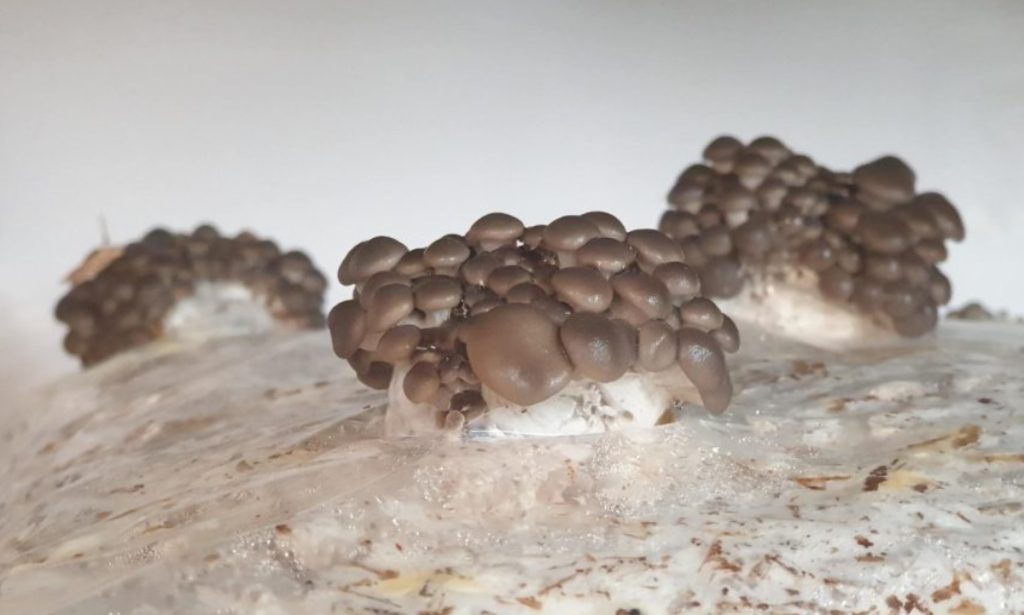
Final Thoughts
Mushroom pinning is an important phase in mushroom growth and also one of the most exciting.
During pinning, you can see baby mushrooms, that often look like tiny pinheads, for the first time with the naked eye.
Creating optimal environmental conditions during this stage is crucial, and if your baby mushroom pins dry out or get too hot, they’ll stop growing.
To learn more about growing mushrooms, visit our Mushroom Growing Hub or try one of our online mushroom cultivation courses.
